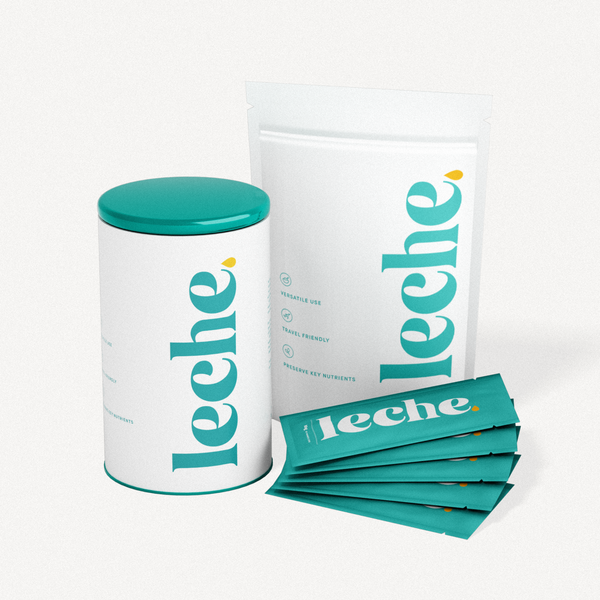
Breastfeeding and pumping can be a juggle but the rewards are vast. Your baby benefits from the goodness of breastmilk, whether you are near or far. Whether you prefer to pump or need to pump, maintaining a supply and managing breast milk storage requires planning and effort.

Why Pump?
Pumping allows moms to continue providing breast milk to their babies while they are engaged in other activities like getting back to work, having time out, taking care of the wider family or any other absences. It can be especially helpful for mothers who have difficulty breastfeeding, have low milk supply or whose baby is in the NICU. Sore or inverted nipples, scabs and nipple trauma can all require moms to take a break from breastfeeding. If you need to combine breast and bottle feeding for any reason, or as a matter of choice, pumping is critical to maintaining your milk supply.
There are many advantages to pumping and the availability of clever accessories makes it a much more streamlined experience than ever before:
- Pumping can help relieve engorgement, which is the feeling of fullness and discomfort that can occur when milk is not removed frequently enough from the breasts. Engorgement can lead to the plugging of ducts and eventually mastitis, but so can over-pumping. The key is to maintain a normal routine of milk removal so that the breast tissue is not stressed and swollen, causing these complications.
- Pumping to freeze can help a mother feel supported because it allows others to be involved in the feeding process. This provides baby with opportunities to bond over feeding with a range of people in their life. The Emulait bottle, designed to mimic the breast in form and function, can be used by any caregiver and helps ease the transition between breast and bottle and back.
- Keeping track of feeds: Pumping can help track how much milk the baby is consuming, which can be useful for mothers who are concerned about their milk supply or their baby's growth. Emulait offers a simple tracking app to support parents on their feeding journey, and ensure parents are up to speed when their baby is being cared for and fed by someone in their support network.
- Preparing for unexpected situations: Pumping can also provide a sense of security for mothers, knowing that they have a backup plan in case of unexpected situations such as unexpected absence, illness or sudden drop in supply.

Pumping doesn’t have to suck! Once a clumsy exercise in milk extraction, today’s pumping methods are a sophisticated affair which offer mothers choice and efficiency.
- All-in-one bras like those available at The Dairy Fairy support nursing, pumping or doing both simultaneously. These bras are not only functional, but provide mom with support, comfort and confidence so she can feel like a warrior, not a milk cow. And because moms come in all sizes, so does this magical lingerie, which is offered to support moms sized 32A-50H.
- Whether you are after a hospital-grade pump for super-productive pumping sessions or an on-the-go or hands-free electrical pump which you can use on your lunch break, there is something for every situation.
- Even milk bags have had a makeover. You can choose durable BPA-free storage bags to avoid freezer burn or leaks once thawed, or freeze your milk bags flat to maximize your freezer space.
- Many bottles, like Emulait, come with adapters which make it easier to pump directly into the bottle.
Tips for Increasing Breast Milk Supply
- Get support from an IBCLC: Lactation consultants with IBCLC accreditation provide personalized guidance on all matters nursing, including low supply. They can support you in achieving better latch, enhancing the breastfeeding experience and identifying birthing complications that can delay or restrict milk production.
- Eat well and drink well: A healthy milk supply relies on a balanced diet and being well-hydrated. Did you know that you need an extra 500 calories per day when breastfeeding and three liters of non-caffeinated fluids?
- Check your medications: Some medicines, herbs and supplements can affect milk supply or pass through breast milk to baby. Examples include peppermint, parsley, cold meds and allergy meds.
- Massage: Regular breast massage can stimulate milk flow and make breastfeeding more comfortable and effective. You can stimulate the “letdown” reflex by gently tickling the breast and plying the nipple between your fingers. Gentle manual compression while pumping can help express milk. Know that there is such a thing as too much - firm massage can lead to inflammation and plugging of ducts.
- Keep it up: Frequent breastfeeding and pumping is essential to establishing and maintaining a good milk supply - make sure you keep on track with this.
- Pumping after feeding: Pumping for 10-15 minutes after nursing can help increase milk supply, and allows you to store extra milk for future use.
- Every drop counts! Using a milk collector cup like the Haakaa helps catch any leaking milk, whether it is letdown milk from the other side or leftover milk once baby has finished feeding.

Breast Milk Freezer Storage Guidelines
Whether you are bagging milk and freezing it right away or using the pitcher method, the guidelines remain the same.
Freshly pumped milk needs to be used or frozen within 4 days. Once frozen, milk should be used within 6 months but can be saved for as long as 12 months. The nutritional content of frozen food is thought to decline after four months, which is why freeze drying can be a great longer-term solution for moms building a freezer stash. Freeze drying better preserves the nutrients in breast milk and is more accessible than ever. And for mamas who have concerns about high lipase breast milk, freezing immediately after pumping will help alleviate some of the lipase effects. Great news...freeze drying can help if you discover your milk is high lipase after freezing!

Creating a freezer stash for your breast milk might seem like a mammoth task, but step by step you can develop a system that aligns with your lifestyle. Pumping will be a breeze for some, and more of a challenge for others so it is important to enlist professional support if you are struggling. Be kind to yourself! Producing milk happens naturally but it is not alway easy.










